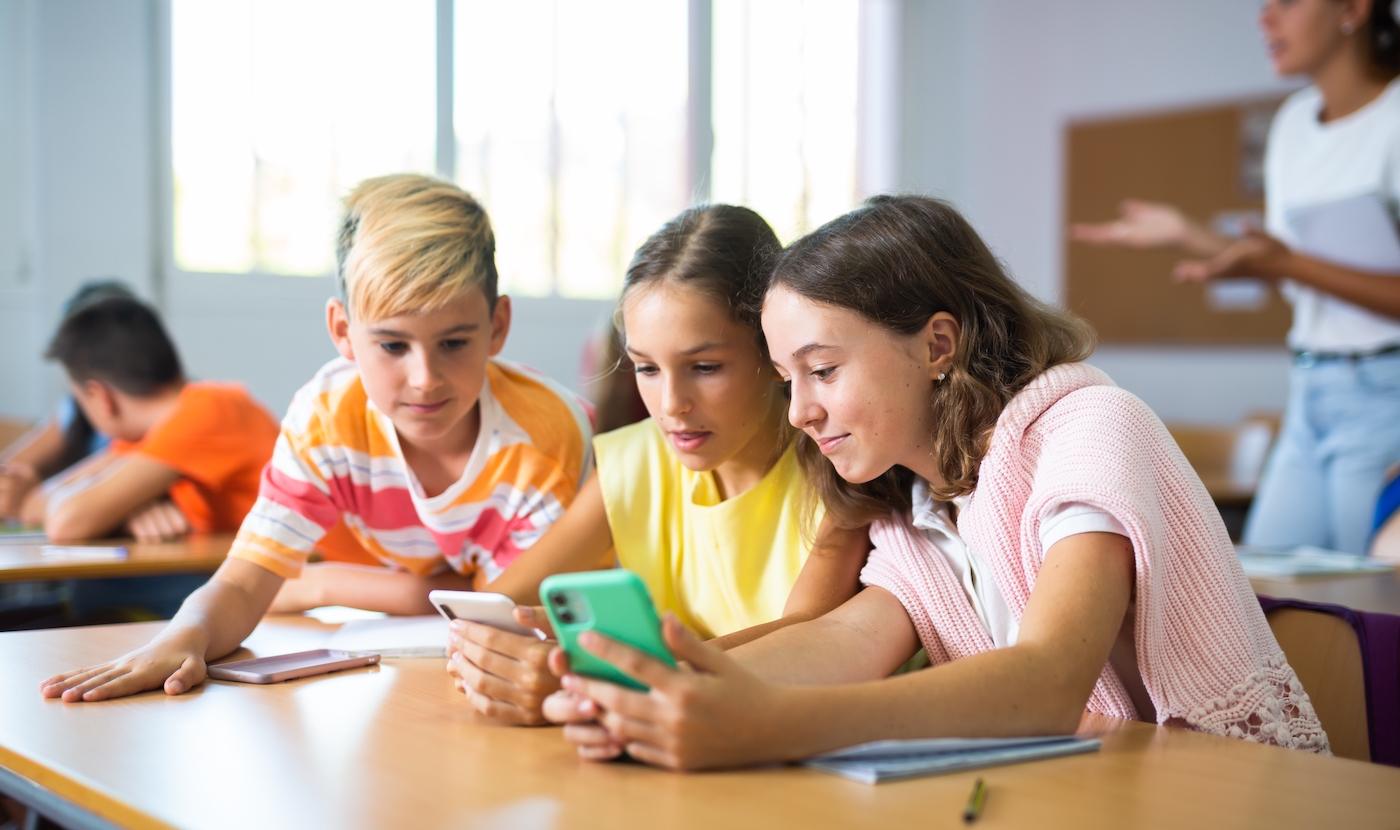What Research Shows About Smartphone Bans In Schools
16:56 minutes

Kids and teens are back in school, and the battle over the smartphones in their pockets is becoming more prominent. For years, teachers and parents have lamented about the distractions these devices cause in and out of the classroom. Last year, the US surgeon general declared a youth mental health crisis, citing social media as a significant factor, and more than 40 US states are suing Meta, owner of Facebook and Instagram, arguing that the company intentionally manipulated their apps to addict teens and kids.
A 2021 survey showed that 76% of US public schools prohibit cellphones. Seven states have implemented bans, and 14 more recently introduced similar legislation.
To parents and educators, it might seem that phones and social media are bad for kids and bad for learning. But research shows that the reality is more complicated, with some suggesting that a blanket smartphone ban isn’t necessarily the solution.
So what are the best ways to approach school phone bans? What do we know about the psychological effects of smartphones on kids and teens? And why does this research tend to defy simple answers?
To answer these questions, guest host and SciFri producer Kathleen Davis is joined by Dr. Emily Weinstein, co-director of the Center for Digital Thriving at Harvard University, and the author of Behind Their Screens: What Teens Are Facing (And Adults Are Missing), and Sandy Roberts, education program manager at Science Friday and former middle school teacher.
“We instituted a cell phone ban two years ago … I wouldn’t want to teach again with cell phones in the kids’ hands. They are a distraction and an addiction. They have no place in classrooms.” —An educator
“As a parent, I think it is reasonable that there will be times during the day I can’t reach my children. As a teacher, cell phones have no place in my classroom … Most of my students enjoy taking a break from their phones so they can concentrate on learning.” —A high school educator and parent
“I understand the concern over a phone being a distraction. But with simple rules and training, kids are capable of taking their phones to school. We need to embrace technology and teach children how to use it and not abuse it.” —A parent
Have a comment? Join the conversation on Facebook, Instagram, X, or our other social media spaces. We’re always @scifri.
Dr. Emily Weinstein is the author of Behind Their Screens: What Teens Are Facing And Adults Are Missing, and is co-director of the Center for Digital Thriving at Harvard University in Cambridge, Massachusetts.
Sandy Roberts is Science Friday’s Education Program Manager, where she creates learning resources and experiences to advance STEM equity in all learning environments. Lately, she’s been playing with origami circuits and trying to perfect a gluten-free sourdough recipe.
The transcript of this segment is being processed. It will be available within one week after the show airs.
Dee Peterschmidt is a producer, host of the podcast Universe of Art, and composes music for Science Friday’s podcasts. Their D&D character is a clumsy bard named Chip Chap Chopman.
Kathleen Davis is a producer and fill-in host at Science Friday, which means she spends her weeks researching, writing, editing, and sometimes talking into a microphone. She’s always eager to talk about freshwater lakes and Coney Island diners.